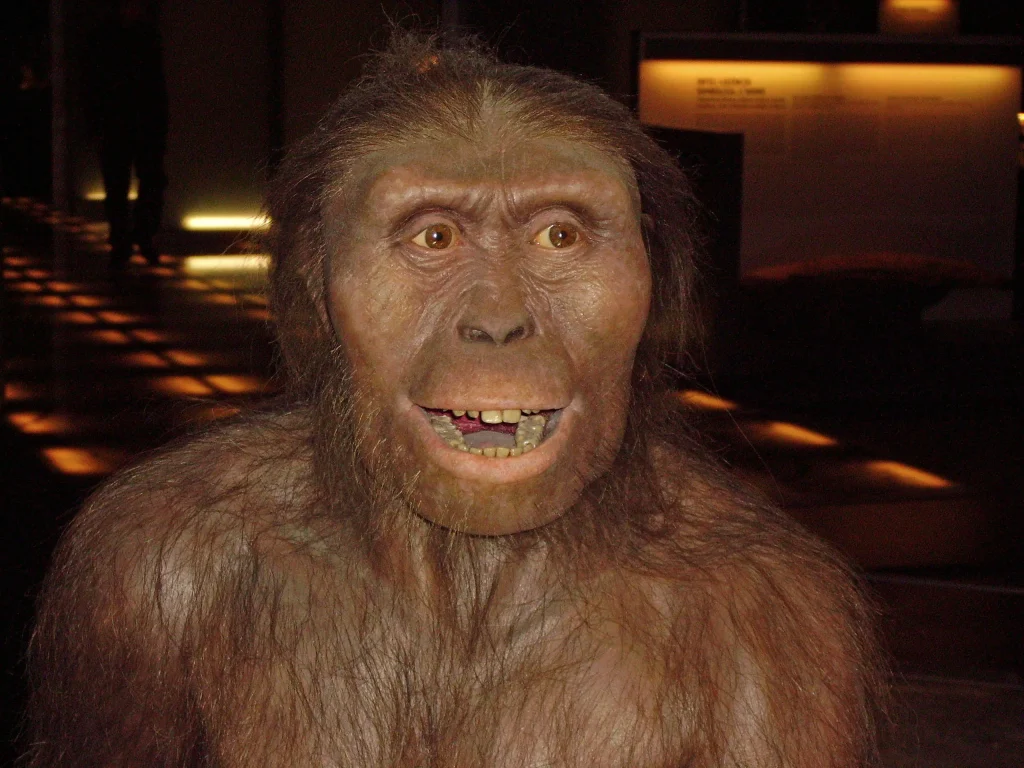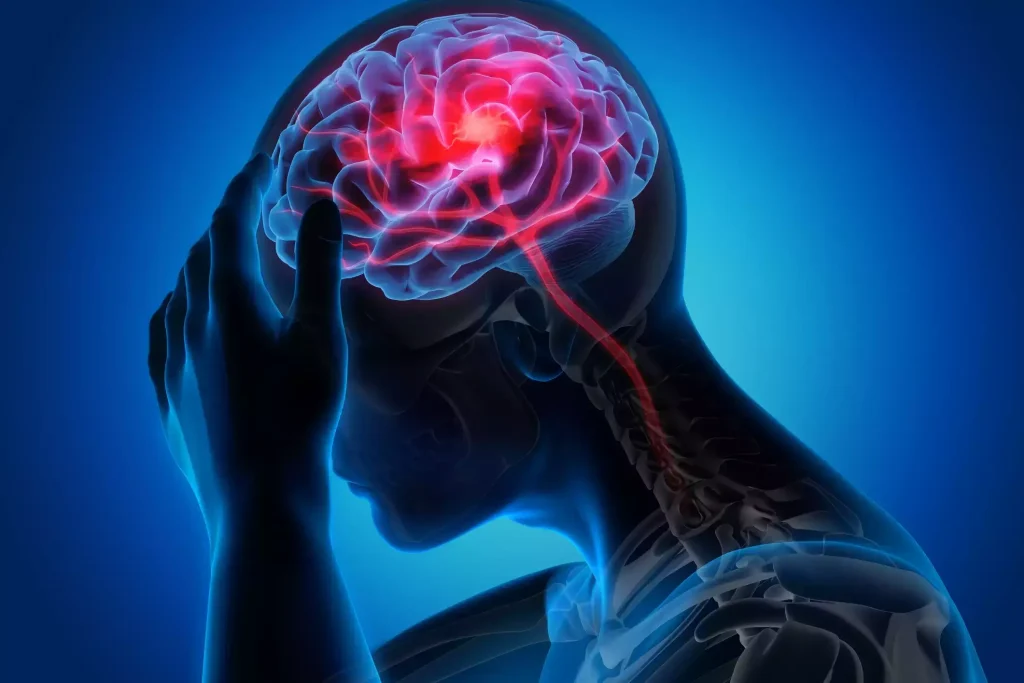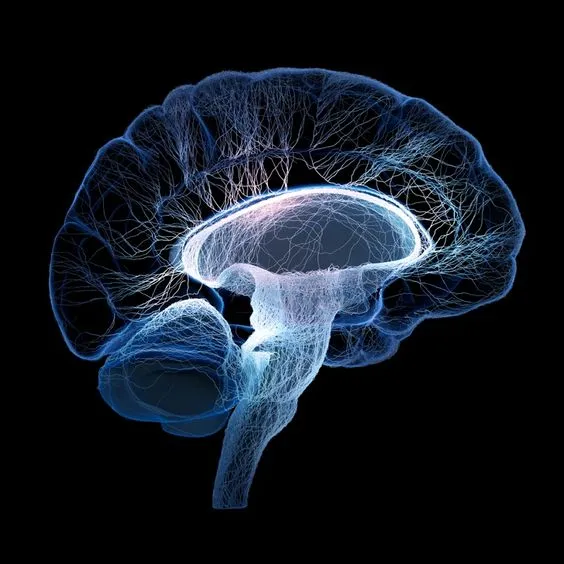Are our brains getting bigger? Or are they shrinking? As humans, we have extraordinary brains, much larger than those of our closest primate relatives. Yet the exact origins and driving forces behind this evolutionary leap remain a mystery. While some researchers argue that the expansion of the neocortex, which is responsible for complex functions such as decision-making and language, led to the increase in brain size, recent studies offer contrasting perspectives.
A team of researchers led by UNLV challenges the common hypothesis that the size of the human brain decreased about 3,000 years ago during the transition to modern urban societies. Brian Villmoare of UNLV and Mark Grabowski of Liverpool John Moores University dispute these findings, contrary to recent claims suggesting a correlation between increased external information storage within social groups and shrinking brain size. This is a tiny answer to the question “are our brains getting bigger?”. But there is more.
In their study, published in the journal Frontiers in Ecology and Evolution, they examined the data set used by the previous research team and refuted their results. Villmoare emphasized the importance of the period around 3,000 years ago, which witnessed many important events, such as the emergence of the New Kingdom of Egypt, the development of Chinese writing and the Olmec civilization.
You may be interested in: Weight loss slows brain aging by up to 9 months
The analyses show that the size of the human brain has remained relatively consistent over the last 30,000 years and for an even longer period, possibly dating back to the origin of our species. According to Villmoare, there is no evidence of a reduction in brain size in modern humans over any historical period.
Evolutionary complexity of the human brain: New findings and directions
To unravel the enigma of our brain’s evolution, scientists are making rigorous comparisons between human and non-human primate brains, taking into account factors such as evolutionary relationships and body size. Surprisingly, even after adjusting for these variables, a study by Miller and colleagues reveals that the human brain exceeds expectations in size. Moreover, growth in brain size accelerated during early human evolution, suggesting significant evolutionary advantages.
Contrary to previous beliefs, the increase in brain size was not only due to neocortical expansion, but also included growth in several brain regions, including the cerebellum, which is crucial for balance and movement. This finding challenges conventional wisdom and underscores the complexity of human brain evolution.

Lucy, the iconic fossil of the Australopithecus afarensis species, lived millions of years ago with a brain a fraction of the size of modern humans. Understanding how such small brains evolved into our sophisticated, socially adept counterparts poses one of the most challenging questions in anthropology.
The role of human-specific genes in brain development: Notch2NL
Over the past million years, the human brain has undergone significant growth and complexity, leading to the extraordinary cognitive abilities that define our species . This expansion is primarily attributed to an increase in the number of neurons in the cerebral cortex, the outer layer of the brain. Although we share 99% of our genome with chimpanzees, it has been a challenge for scientists to identify genetic changes specific to the evolution of the human brain.
One of the mechanisms driving evolution is gene duplication, where an ancestral gene is copied and the copy becomes a related gene known as a “paralog”. Pierre Vanderhaeghen and his team focused on duplicated genes unique to the human and great ape lineage. Often overlooked, these genes may contribute to the rapid emergence of human-specific traits such as an enlarged cortex.
While dozens of human-specific genes have been identified, their function is largely unknown. Many are thought to be non-functional or redundant, making their annotation in genome databases difficult.
You may be interested in: Scientists develop a brain implant that translates brain signals into speech
To uncover human-specific genes involved in brain development, researchers faced the challenge of distinguishing these genes from ancestral genes. Using specialized RNA sequencing, Vanderhaeghen’s team identified a repertoire of duplicated genes crucial for cerebral cortex development in humans. They focused on Notch2NL genes, which evolved from ancient Notch genes that control an intercellular signaling mechanism crucial for brain development. In particular, Notch2NL genes were found to increase the number of cortical neurons by expanding cortical stem cells. Increasing the number of cortical neurons means that the cerebral cortex, the outermost layer of the brain responsible for cognitive functions such as thinking, memory, language, learning and consciousness, contains more neurons.

The hypothesis is supported by the location of the genes on chromosome 1 , which has previously been linked to disorders related to brain size, such as microcephaly and macrocephaly.
What is microcephaly and macrocephaly?
Microcephaly and macrocephaly refer to two different conditions that deviate from the normal size of the human brain. Microcephaly is a condition where the brain is smaller than normal. This usually occurs as a result of a problem during the development of the brain or insufficient growth of brain tissue. Microcephaly can be associated with a variety of causes, such as various genetic factors, infections or harmful substances to which the fetus is exposed. As a result, the child may have significant problems with cognitive and physical development.
Macrocephaly is characterized by a larger than normal brain volume. This can be caused by brain tissue growing faster than normal or an abnormal accumulation of fluid in the brain. Macrocephaly can be caused by problems that usually occur before or during birth. In this condition, the child’s head circumference is usually larger than normal. Both conditions can affect a child’s quality of life and may require specialist medical assessment and treatment.
Studies by American scientists have revealed a correlation between these conditions and the region harboring NOTCH2NL genes. Collectively, these findings suggest that a selective repertoire of human-specific gene duplications may regulate the size and function of the human brain. Changes in NOTCH2NL copy numbers may affect brain size, shedding light on the genetic basis of brain diseases.
This research not only advances our understanding of human evolution, but also has implications for understanding brain disorders and offers potential insights for therapeutic interventions.
Factors shaping the evolution of the human brain: Environmental, social and cultural interactions
Three main hypotheses attempt to elucidate the evolution of large human brains: environmental, social and cultural factors. Environmental challenges, such as obtaining food, may have exerted selection pressure for larger brains. Similarly, social interactions, whether cooperative or competitive, may have favored individuals with enhanced cognitive abilities. In addition, cultural factors, such as knowledge transmission, may have played an important role.
New research led by Mauricio Forero and published in the journal Nature suggests that environmental factors predominantly drive the expansion of the human brain. Using mathematical models, the study highlights the metabolic costs and benefits associated with brain development, pointing to the harsh challenges of the African savannah as potential catalysts for brain growth.
But the interplay between environmental, social and cultural factors complicates the narrative. Evolution is a multifaceted process in which interdependent variables influence each other. Deciphering the relative importance of these factors remains a daunting task, as experts such as Amy Bauernfeind and Matthew Rossano acknowledge.
Despite its complexity, the story of the evolution of the human brain offers profound insights into the nature of intelligence and the conditions that have shaped our species. The journey from our small-brained ancestors to the peak of cognitive sophistication highlights the remarkable trajectory of human evolution and invites further exploration of the mysteries of the mind.

Predicting the future of humanity
Humanity’s journey from self-replicating molecules to complex beings is a testament to the power of evolution. Over the course of four billion years, organisms adapted to their environment through genetic mutations and natural selection, resulting in the emergence of Homo sapiens. However, our evolutionary story is far from over, and predicting the future of humanity requires a deep understanding of our past.
Evolutionary changes occur over large time scales, driven by factors such as genetic mutations and selective pressures. While traditional threats such as predators, famine and disease have diminished in modern society, new forces are shaping our evolution. Sexual selection driven by mate choice and the challenges of navigating our rapidly changing cultural and technological landscapes are now influencing our genetic makeup.
Our transition from hunter-gatherers to inhabitants of densely populated cities has led to significant changes in our genetic makeup. For example, as our diets changed with the advent of agriculture, genes for digesting starch and dairy products evolved. In addition, exposure to disease in urban environments encouraged mutations for disease resistance.
Are our brains getting bigger? Or are they shrinking?
Our brains, according to some research, have been undergoing a strange shrinking trend. Of course, this contradicts the research we mentioned at the beginning. The unnatural environments we create may exert new selective pressures, leading to unprecedented evolutionary changes in our species.
We can gain insights from our evolutionary past to predict the trajectory of human evolution. Trends observed over millions of years, especially those that have emerged in the last 10,000 years since the dawn of agriculture and civilization, provide valuable clues.
One important aspect that is likely to evolve is our lifespan. Thanks to declining mortality rates and advances in health, humans are set to live much longer. Evolutionary pressures now favor delayed sexual maturity and adaptations that extend lifespan and fertility, potentially leading to a future in which the average human routinely lives more than 100 years.
In addition, humans may continue to grow taller. Evolutionary trends towards larger sizes have been observed in several species, including hominins. Factors such as decreasing mortality and sexual preferences for taller mates will likely drive this trend, possibly resulting in a population where heights similar to those in regions such as the Netherlands become the norm.
Looking to the future, humanity’s evolutionary journey is far from over. While the challenges and opportunities of our modern world shape the trajectory of our evolution, the flexibility and adaptability built into our genetic makeup allows us to continue to evolve in response to our changing environment. By understanding our past, we gain insight into the future of our species and the extraordinary journey that lies ahead.
References:
How humans evolved bigger brains. (2019, February 18). eLife. https://elifesciences.org/digests/41250/how-humans-evolved-bigger-brains
Resnick, B. (2018, May 23). Why do humans have such huge brains? Scientists have a few hypotheses. Vox. https://www.vox.com/science-and-health/2018/5/23/17377200/human-brain-size-evolution-nature
How did human brains get so large? (2023, October 13). ERC. https://erc.europa.eu/projects-statistics/science-stories/how-did-human-brains-get-so-large
How Humans Evolved Supersize Brains | Quanta Magazine. (2022, September 29). Quanta Magazine. https://www.quantamagazine.org/how-humans-evolved-supersize-brains-20151110/
Longrich, N. R. (n.d.). Future evolution: from looks to brains and personality, how will humans change in the next 10,000 years? The Conversation. https://theconversation.com/future-evolution-from-looks-to-brains-and-personality-how-will-humans-change-in-the-next-10-000-years-176997


Leave a Reply